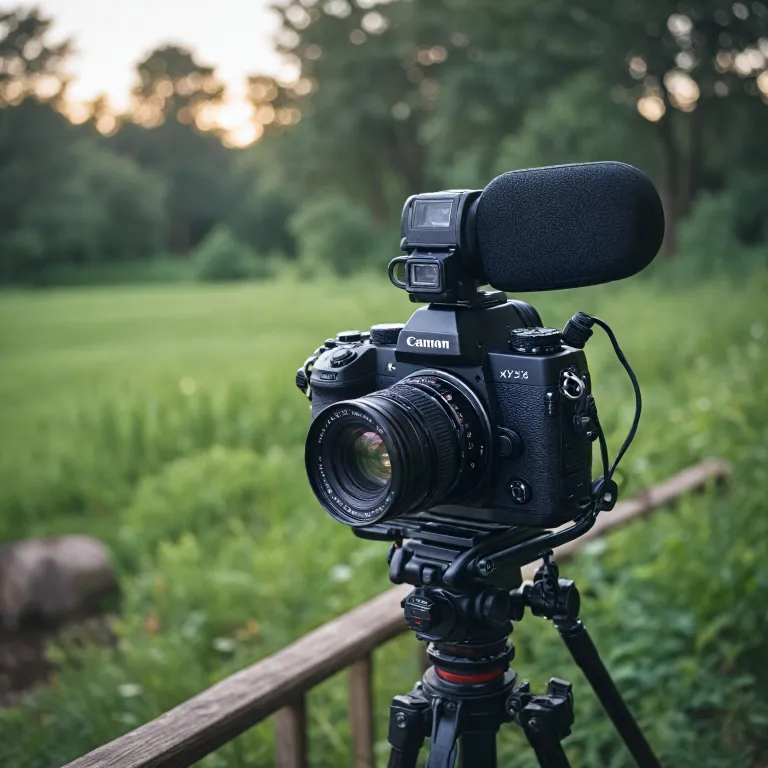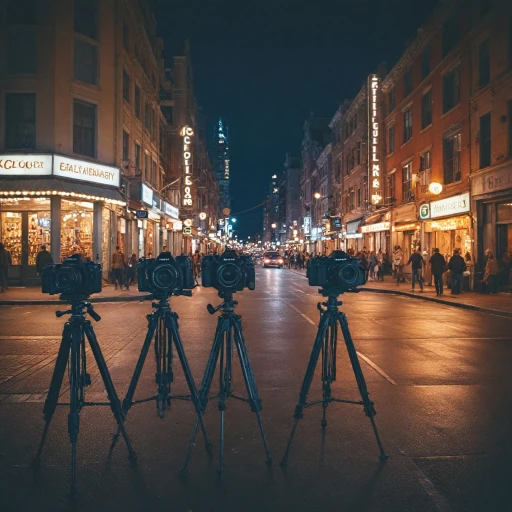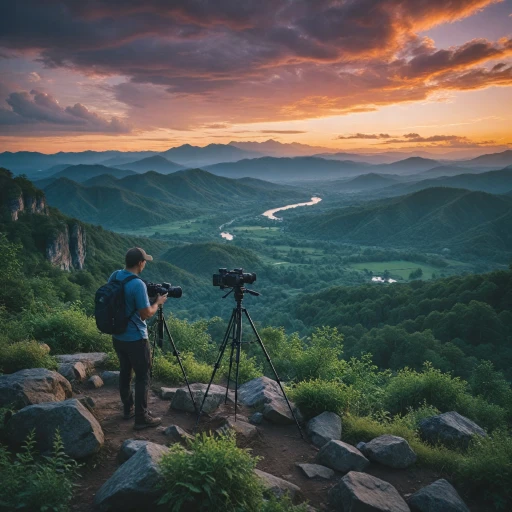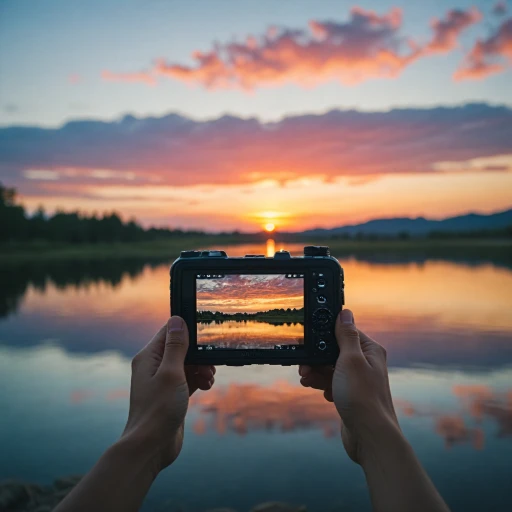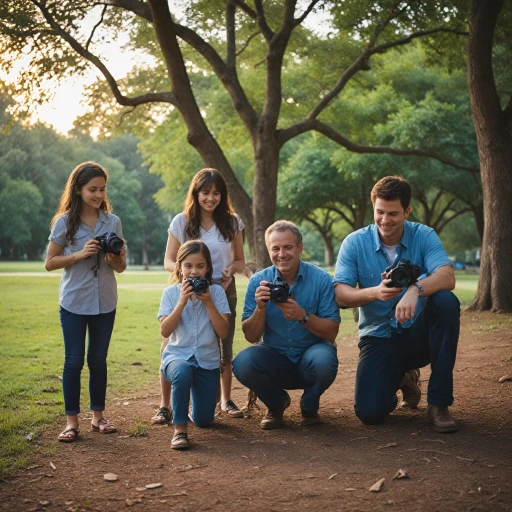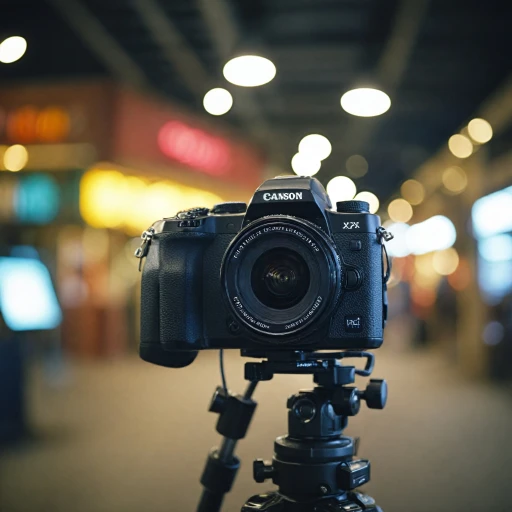
Understanding the Importance of Audio in Digital Filmmaking
The Role of Audio in Digital Filmmaking
In the world of digital filmmaking, audio plays a crucial role that is often underestimated. While stunning visuals can captivate an audience, it's the audio that truly immerses them in the experience. High-quality audio can elevate a video from amateur to professional, making it essential for anyone serious about filmmaking to invest in the right audio equipment.
Why Audio Matters
Audio is not just an accessory to your camera; it is a fundamental component of storytelling. A well-captured sound can convey emotions, set the scene, and provide context that visuals alone cannot. Whether you're using a compact wireless microphone or a more elaborate microphone system, the clarity and quality of the audio can significantly impact the viewer's perception of your work.
Audio Equipment Essentials
Choosing the right audio equipment involves understanding the various products available, such as wireless microphones, audio mixers, and audio cables. Each piece of equipment serves a specific purpose, and selecting the right combination can enhance your digital camera's capabilities. Consider factors like the price, compatibility with your camera, and the specific needs of your project when adding items to your shopping cart.
Integrating Audio with Your Camera
Integrating audio equipment with your digital camera requires careful consideration of the interface and connection options. Many cameras come with a hot shoe or other mounting options for easy attachment of microphones and transmitters. Understanding how to effectively connect and configure these devices is crucial for capturing high-quality audio.
For more insights into optimizing your digital camera setup, you might find it helpful to read about the video resolution capabilities of popular cameras.
Choosing the Right Audio Equipment for Your Camera
Selecting the Ideal Audio Gear for Capturing Film
When it comes to enhancing your digital camera experience, understanding the importance of audio cannot be overstated. The right audio equipment can deeply transform your videos, adding a rich, professional sound that truly complements the visual story you're telling. Here's a detailed look at how you can choose the right audio gear to ensure impeccable sound quality in your filmmaking endeavors. Firstly, consider the core of your audio setup—the microphone. An external microphone can drastically outperform any camera's built-in mic. Depending on your specific needs, a compact wireless microphone system can be a versatile choice, offering freedom of movement while maintaining excellent audio capture. Trusted products from well-established audio companies provide robust options. A hot shoe mount is an essential accessory to firmly attach your microphone directly onto your camera, minimizing setup time and maintaining a clean, professional interface. If you're working on a tight budget, using cost-effective microphones and audio solutions might be vital, but make sure to invest in reliable brands. Audio Mixers and Transmitters For those delving into multi-track or complex audio setups, an audio mixer can be indispensable. Mixers allow for blending multiple audio sources seamlessly, granting more control over the audio outcome in pro video projects. Additionally, digital wireless transmitters can be game-changers for scenarios that demand mobility and flexibility on set. Cables and Accessories Don't forget about the unsung heroes of audio gear – audio cables and connectors. Pro audio cables ensure that your audio quality isn't compromised by interference or signal loss. Remember to double-check compatibility between your camera's input ports and the audio accessories you choose, including ensuring that all needed adapters or interface components are readily available in your shopping cart. Finally, familiarize yourself with what’s available and read product reviews and comparisons. It's crucial to understand the privacy policy and rights reserved disclaimers when researching and shopping online. For more inspiration on maximizing your recording setup in adventurous conditions, check out this guide on top picks for capturing stunning underwater photos. This resource will provide insights on gear that can also handle extreme environments, thus broadening your filming potential.Integrating Audio Equipment with Your Digital Camera
Smooth Integration: Boosting Your Camera's Audio Capabilities
Integrating audio equipment with your digital camera might seem like a daunting task, but it can actually be quite straightforward once you grasp the essentials. Let’s dive into some practical steps to streamline this process and enhance your audio setup effectively. First, consider the physical connection options available for your camera. Most cameras come with a hot shoe mount which can be utilized to attach various pro audio accessories, such as digital wireless microphone systems or compact wireless transmitters. These products allow you to capture audio without cluttering your setup with additional cables. When aiming for seamless integration, it's important to choose compatible audio interfaces that are designed to work in tandem with camera pro models and their features. Having an interface that accommodates multiple inputs, including microphones and audio mixers, will greatly enhance your recording experience. Quality audio mixers, available at different price ranges, enable you to balance and mix sound inputs effectively, leading to pro-level audio outputs. It's also vital to consider the stock audio capabilities of your current camera. Reading manufacturer specifications will help you understand what your camera can handle natively and what additional audio accessories will be necessary for achieving the desired results. Many video creators start by adding a pro video microphone to their kit, which can be crucial for those looking to upgrade their audio quality without a substantial investment. Given the dynamic nature of filming environments, wireless microphone systems are highly recommended for their flexibility and ease of use. Opt for a microphone system that includes both a transmitter and receiver, ensuring a compact and efficient setup ready for diverse shooting scenarios. For those interested in extensive filming advice and top product recommendations, explore our tips on choosing the perfect lens for capturing stunning landscape photos. With the right camera audio interface and carefully chosen accessories, you can significantly increase both the quality of your footage and the breadth of your creative possibilities.Techniques for Capturing High-Quality Audio
Mastering Techniques for Superior Audio Capture
Capturing top-notch audio for your digital video projects can significantly enhance the professionalism and impact of your content. Here are some techniques to consider:- Invest in Quality Microphone Systems: Replace your camera's stock microphone with a professional microphone system, such as a wireless microphone. These products offer clearer audio by reducing background noise. Consider compact wireless systems for mobility and ease of use.
- Utilize the Hot Shoe Interface: Make the most of your camera’s hot shoe by adding compatible audio accessories like microphones or wireless receivers. This not only optimizes sound capture but also streamlines your setup.
- Select the Right Audio Cables and Mixers: Ensure you use high-quality audio cables to connect microphones to your camera. Incorporating mixers, when necessary, allows for fine-tuning audio levels directly during recording.
- Mind Your Location: When filming, be aware of the environment's acoustic properties. Ensure that walls, floors, and other surfaces do not introduce unwanted echoes or disturbances.
- Wireless Options: Consider using a digital wireless system to eliminate the hindrances of tangled cables. By utilizing a transmitter, you can maintain flexibility and move freely without compromising audio quality.
- Check Compatibility and Cart Contents: Regularly review your shopping cart for compatibility, ensuring all audio equipment seamlessly integrates with your camera. Confirm that your camera pro setup aligns with your intended professional output.
Post-Production Audio Enhancements
Refining Your Audio in Post-Production
Once you've captured your video and audio, the post-production phase is where you can truly enhance the sound quality. This step is crucial for achieving a professional audio experience that complements your digital camera footage. Here are some key techniques to consider:
- Use Audio Editing Software: Investing in reliable audio editing software can make a significant difference. These tools allow you to adjust levels, reduce noise, and add effects, ensuring your audio matches the quality of your video.
- Sync Audio and Video: Ensure that your audio is perfectly synced with your video. This is especially important if you are using a separate microphone system or wireless microphone. Proper synchronization can prevent distracting delays or mismatches.
- Noise Reduction: Background noise can detract from the clarity of your audio. Use noise reduction features in your editing software to minimize unwanted sounds, enhancing the focus on your main audio source.
- Equalization: Adjusting the equalization (EQ) settings can help balance the frequencies in your audio. This is particularly useful if your recording environment was less than ideal, allowing you to highlight or suppress specific audio elements.
- Mixing and Mastering: Consider using audio mixers to blend different audio tracks seamlessly. Mastering your audio ensures that the final output is polished and consistent across various playback devices.
By focusing on these post-production techniques, you can elevate the audio quality of your digital camera projects, making them more engaging and professional. Remember, the right combination of audio accessories, such as audio cables and compact wireless systems, can significantly impact the final result. Whether you're using a camera pro setup or a more basic configuration, these enhancements can add value to your work.
Troubleshooting Common Audio Issues
Overcoming Common Audio Connectivity Challenges
Troubleshooting audio issues is an integral part of improving your digital camera experience. Given the plethora of accessories, cables, and microphones available, it's essential to ensure compatibility and proper connection to achieve optimal audio results. Here are a few key points to tackle common audio connectivity challenges:
- Wireless Microphone Connection: When using a digital wireless microphone or transmitter, ensure that the frequency is properly aligned with your audio receiver. Interference can result from frequency overlap with other devices, so check if retuning the frequency improves the connection.
- Audio Interface Integration: If your camera uses a specific audio interface, compatibility with your microphone system and audio mixers is crucial. Ensure all components, including audio cables and interfaces, are securely connected and fully functional before recording.
- Adaptation Issues: Utilizing a hot shoe or compact wireless system might introduce connection hiccups. Double-check the compatibility of your shoe mounts and other add-ons—especially in pro video setups—to prevent audio dropouts.
- Price vs. Quality: While stock products might initially seem cost-effective, they may not offer the robust performance needed for professional audio work. Investing in high-quality pro audio solutions often yields fewer issues and enhanced sound clarity.
- Software Setbacks: Post-production adjustments can reveal audio inconsistencies that weren’t apparent during recording. Products with built-in mixers might offer solutions, but updating software and firmware can sometimes resolve minor discrepancies.
By anticipating and resolving these audio issues promptly, you'll ensure your video maintains high production quality and a seamless viewer experience. Effective troubleshooting is a skill developed over time, benefiting greatly from continual reading and upgrading of equipment as required.
